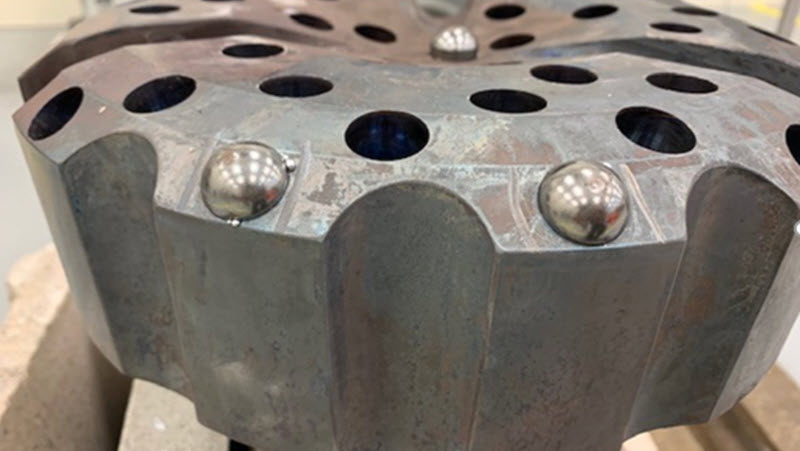Induction Forging Steel Rods to Stamp Saw Blade Handles
When it comes to many manufacturing processes, including this forging application, precision and efficiency are critical. Traditional heating methods...
Processes
Processes: More
Processes: More

Industries:
Industries: More
Industries: More
Industries: More

Products:
Products: More
Services:
Services: More

Learn:
Learn: More
About:


A client in the oil and gas industry came to Ambrell with a shrink fitting application. They had been using a cold method for inserting carbide buttons into hammer bits, but wanted to look to induction heating. They took advantage of THE LAB at Ambrell's complimentary applications testing to determine the feasibility of their shrink fitting application.
The client needed to heat hammer bits to 500 °F (260 °C). THE LAB determined that an Ambrell EKOHEAT® 50 kW, 5-15 kHz induction heating power supply with a workhead and coil specifically designed for this application would be the right solution for this application. They designed a single position multiple-turn pancake coil and used an infrared camera for temperature monitoring during testing.
The large drill head was then ready for testing. THE LAB found that the outer area of the part heated more quickly than the center. Power delivered to the part was adjusted to keep the maximum temperature between 570° F (299° C) and 580° F (304° C) while the center came up to the target temperature through induction and conduction. Once at temperature, the carbide bits were then inserted into the hammer bit.
Torch heating is sometimes also used for this application, but induction offers several benefits. Speed is a significant one. Induction also is more efficient as it heats directly into the part. Finally, induction does not introduce an open flame into the work environment, so it results in a safer and often cooler work place.
THE LAB at Ambrell has considerable experience with induction shrink fitting applications like this one. Visit our induction shrink fitting page to see a sampling of shrink fitting applications assessed by THE LAB. And, to learn more about free application testing, visit our page about THE LAB or contact us today to get the process started. 

When it comes to many manufacturing processes, including this forging application, precision and efficiency are critical. Traditional heating methods...

The busy fall tradeshow schedule continues, with Ambrell set to exhibit at two more events next week: WESTEC 2025 in Anaheim, CA and The Battery Show...

Toronto, ON | September 29 – October 2, 2025